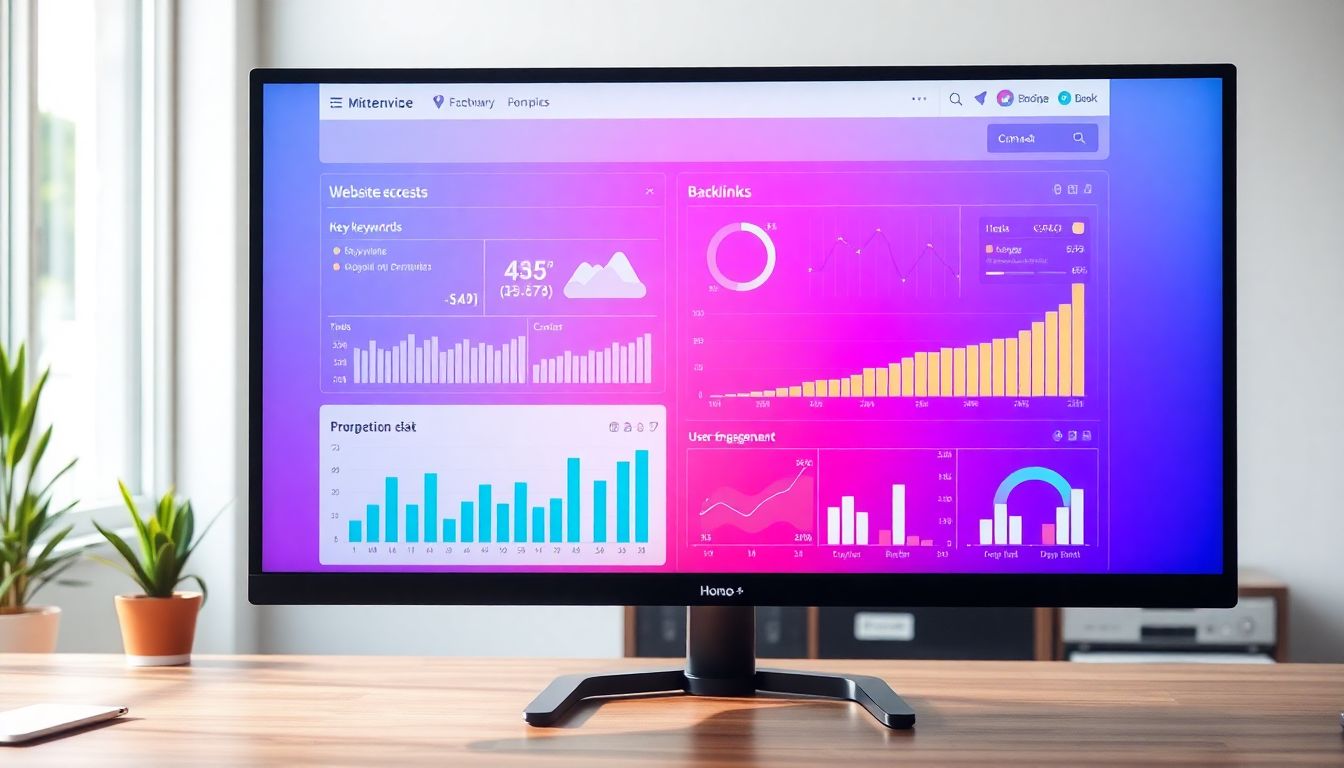How to Rank Your Website Higher on Google?

High search engine rankings can dramatically boost your website traffic. About 75% of people never scroll past the first page of search results. This statistic shows why optimizing your site for search engines is critical. However, the path to a higher ranking is challenging due to fierce competition. This article will lay out key strategies that can improve your website's ranking and drive more visitors.
Keyword Research: Unearthing Search Intent
Understanding Search Intent
Understanding user search intent is vital. People search for different reasons:
- Informational: Looking for facts (e.g., "What is SEO?")
- Transactional: Ready to buy (e.g., "Buy running shoes online.")
- Navigational: Seeking a specific site (e.g., "Facebook login.")
Identifying the intent behind keywords helps tailor content effectively, ensuring it meets user needs.
Keyword Research Tools
Several tools can assist in keyword research:
| Tool | Features | Pricing |
|---|---|---|
| SEMrush | SEO audit, keyword tracking | Starts at $119.95/month |
| Ahrefs | Backlink checker, keyword explorer | Starts at $99/month |
| Google Keyword Planner | Useful for PPC and SEO research | Free |
Each tool has unique strengths, catering to various SEO strategies.
Long-Tail Keywords
Targeting long-tail keywords can significantly enhance your ranking. These are longer, more specific phrases (e.g., "best running shoes for flat feet").
A study shows that long-tail keywords account for 70% of search traffic. They usually face less competition and have higher conversion rates.
On-Page Optimization: Mastering Website Fundamentals
Optimizing Title Tags and Meta Descriptions
Crafting appealing title tags and meta descriptions boosts click-through rates.
- Title Tag Example: "Top 10 Running Shoes for Comfort in 2023"
- Meta Description Example: "Discover the best running shoes that combine comfort and style for your next marathon."
Make sure they are concise, include keywords, and clearly convey the page's content.
Content Optimization
Quality content is key. Create informative articles that address search intent. Aim for a word count of 1,500+ words for in-depth coverage. A study found that content around 2,000 words tends to perform better in search rankings.
Ensure the text is easy to read, with short paragraphs and clear language.
Header Tags (H1-H6)
Header tags like H1, H2, and H3 structure your content, making it easy for both users and search engines to understand.
An example of proper usage:
- H1: How to Rank Your Website Higher on Google
- H2: Keyword Research: Unearthing Search Intent
- H3: Understanding Search Intent
Using headers correctly enhances SEO and improves the reader's experience.
Off-Page Optimization: Building Authority and Trust
Backlink Strategy
High-quality backlinks strengthen your website's authority. Backlinks from reputable sites signal trust to search engines.
Types of backlinks:
- Editorial: Naturally linked by other websites.
- Guest Posts: Content published on other blogs with a link back.
Statistics show that websites with a higher volume of quality backlinks rank better in search results.
Social Media Marketing
Social media plays a crucial role in boosting website visibility. Engaging posts can drive traffic and promote content.
Example: A fashion brand using Instagram to showcase new styles gained thousands of visitors to their site, enhancing their SEO ranking.
Online Reputation Management
Managing online reviews is vital. Positive reviews can enhance your credibility, while negative ones can hurt your ranking.
A study revealed that 70% of consumers trust reviews as much as personal recommendations. Responding to feedback shows commitment to customer satisfaction.
Technical SEO: Ensuring Website Crawlability
Website Speed Optimization
A fast website improves user experience and boosts SEO. Tools like Google PageSpeed Insights can help you analyze and improve speed.
Research indicates a one-second delay in load time can increase bounce rates by 32%.
Mobile Friendliness
With Google’s mobile-first indexing, a responsive design is essential. Ensure your website looks good on mobile devices to keep users engaged and improve your rankings.
XML Sitemap and robots.txt
Creating an XML sitemap guides search engines to your content. Additionally, using robots.txt helps control which parts of your site search engines can crawl.
Content Strategy: Creating Engaging and Valuable Content
Content Pillars and Clusters
Using content pillars and clusters organizes your topics and enhances SEO. A central theme (pillar) supported by related articles (clusters) keeps visitors engaged.
Example: A health website focused on "Weight Loss" can have clusters about diet plans, exercise tips, and success stories.
Content Formats
Explore different formats like blog posts, videos, and infographics. Each format attracts unique audience segments.
Studies show that video content can increase organic traffic by 157%.
Content Promotion
Promoting your content through social media and newsletters expands its reach. Share updates regularly to keep audiences informed and engaged.
Conclusion
Improving your website's ranking is an ongoing journey that requires consistent effort. Focus on keyword research, on-page and technical optimization, off-page strategies, and valuable content. Be patient, as results may not come immediately, but persistence will pay off.
For more insights and tips, subscribe to our newsletter and start the journey toward achieving that coveted top spot on search engines.






No comments: